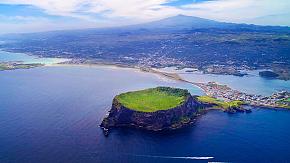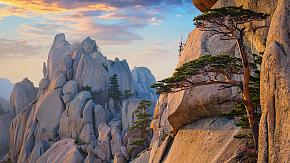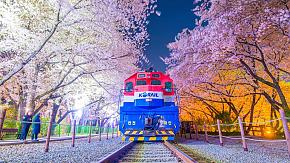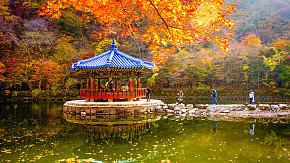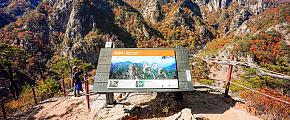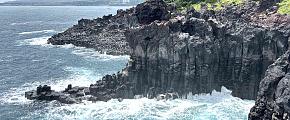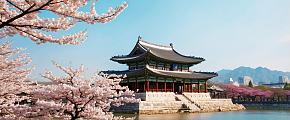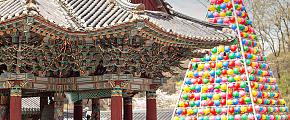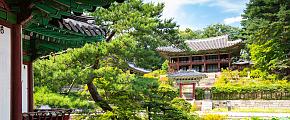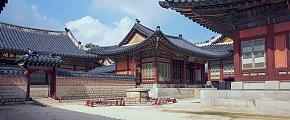Hiking & Seasonal Guide to Hallasan 2026
Hallasan, or Halla Mountain, is the highest point in Korea (1,947 m, 6,388 ft). This shield volcano can be seen from almost anywhere on Jeju Island, but its peak is often shrouded in clouds, plus quite a challenging hike as well as stunning views of autumn leaves - sounds like another Mt. Fuji, right? Read on this Hallasan travel guide below for more activities and fun during your trip to South Korea.
Best Time to Visit Hallasan National Park
Spring and autumn are the best seasons to visit Hallasan National Park, when the scenery is bright and the weather conditions are perfect for both sightseeing and hiking.
Summer, a little bit of heat and humidity, though, with a higher chance of reaching the peak. If you're someone who thrives on adventure and isn't put off by cooler temperatures, then a winter Hallasan visit might be just the thing for you.
- Hiking season: from March to November
- Best time for hiking: April to May, October to November
- Best time for cherry blossoms: Late March
- Best time for fall foliage: October to November
Spring (March to May)
- Foot & Summit Temperature: 5 to 18℃ (41 to 64℉) / -5 to 5℃ (23 to 41℉)
- Weather: sunny, mild, and a little bit foggy
The flower season, when Hallasan mountain wakes up again from the melting snow with blooming blossoms: the king cherry blossom in late March, which is about 2 weeks earlier than Seoul, and the sea of rhododendron in May, along the trail and against the sky.
For something fresh, join the ranger on a fiddlehead fern-picking expedition or take your binoculars to spot birds or deer.
Snow can still be seen at the peak, and high altitude is common to pair with strong winds in early spring, which may make your hike a little bit challenging.
Autumn (September to November)
- Foot & Summit Temperature: 10 to 20℃ (50 to 68℉) / 0 to 10℃ (32 to 50℉)
- Weather: dry, pleasant, and windy
Autumn is the most recommended sightseeing and hiking period to conquer Korea's highest peak - whether the orange harvest season (September to October) to juice your journey, the fall foliage stretches the trail like a fiery tunnel, or the oak-aged citrus shochu you may sample after the hike.
For your autumn leaves hunting, head directly to the Yeongsil Trail. Though without the peak check out, you can still capture the stunning color changing from golden foot to crimson summit.
Yet, strong winds are still common at the summit of Mt. Halla, which may also pair with yellow dust during this dry season.
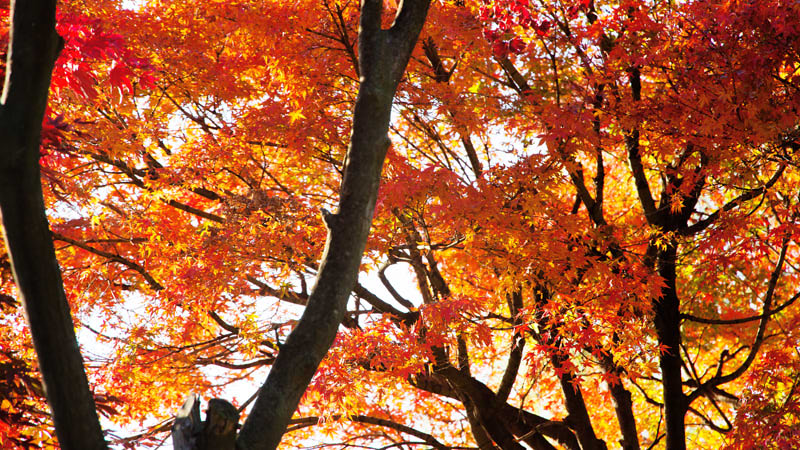 Fall Foliage Along the Yeongsil Trail
Fall Foliage Along the Yeongsil Trail
Summer (June to August)
- Foot & Summit Temperature: 22 to 28℃ (72 to 82℉) / 5 to 15℃ (41 to 59℉)
- Weather: Hot, humid, with showers in the afternoon
Summer is the wet season of Hallasan, when you can experience the lush landscape dotted with vibrant highland blossoms. However, showers usually fall during the afternoon, making a quick landing before 10 am quite necessary.
So, an early morning hike before the rising temperature is more recommended for your summer hike, or consider an overnight stay at the peak of Baengnokdam to catch the sunrise with a stunning cloud sea.
Winter (December to February)
- Foot & Summit Temperature: -2 to 8℃ (28 to 46℉) / -15 to -5℃ (5 to 23℉)
- Weather: freezing, snow, and windy
Hallasan in winter is peaceful and tranquil - almost blanketed in snow, and everything seems frozen in a pure white fairytale. Though the snow and ice may make your peak journey more challenging, skipping the summit and joining the Hallasan Snowflake Festival at Eorimok Square is also a good idea.
Is Hallasan Easy to Climb
As South Korea's highest peak (6,388 ft), for most hikers, climbing Hallasan can be a little bit challenging, but not unbeatable - most of the routes are well organised and marked, while the changing weather can be the real boss.
It offers several routes (though only two to the summit crater), including a beginner and family-friendly one to reach the summit, as well as some leisurely walking trails for a simple try or to catch its stunning mountain views.
- To reach the summit: Gwaneumsa (shorter & steeper) & Seongpanak Trail (longer & flatter)
- The most popular Hallasan hike: Up Seongpanak and down Gwaneumsa
- For beginners or simple hikes: Seongpanak, Yeongsil & Eorimok Trail
- For advanced hikers: Gwaneumsa Trail
 Hallasan Climbing
Hallasan Climbing
How Long Does it Take to Hike Mount Halla
It usually takes 4 to 5 hours to reach the peak of Hallasan, and about 8 to 9 hours to complete the whole round.
And if you are the one looking for relaxation rather than the peak conquer, the simple hike there only takes half a day for your leisure trip.
| Trail | End | Length | Time | Difficulty |
| Gwaneumsa | Baengnokdam | 8.7 km | 4.5 h | Hard |
| Seongpanak | Baengnokdam | 9.6 km | 5 h | Moderate |
| Yeongsil | Witse Oreum | 5.8 km | 2.5 h | Simple |
| Eorimok | Witse Oreum | 6.8 km | 3 h | Simple |
| Donnaeko | South Cliff Fork | 9.1 km | 4.5 h | Moderate |
More About Hallasan Hiking Trails With Map
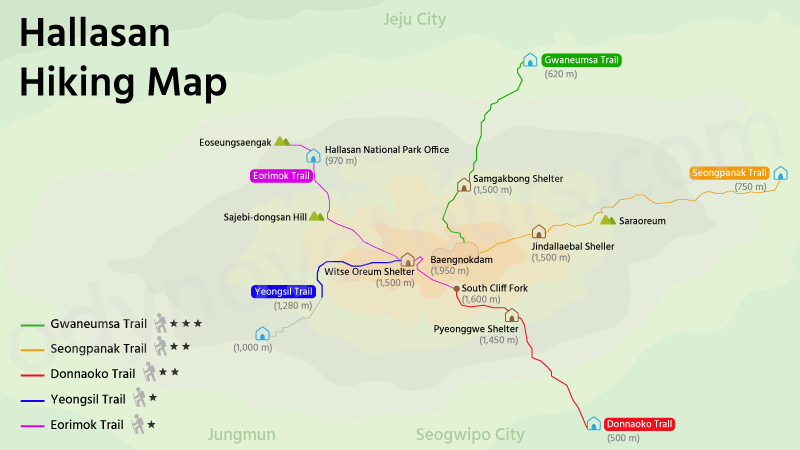 Hallasan Hiking Map
Hallasan Hiking Map
Gwaneumsa Trail
Considered the most beautiful trail, with cliffs, lava rock, rivers, craters, and suspension bridges over deep ravines, yet the most difficult one has much steeper stairs and rocks to overcome. Although the challenge there brings fewer climbers for your immersive hike, whether ascending or descending, it may not be that easy for your knees.
Seongpanak Trail
Another trail leading to the summit crater, Seongpanak, is the longest but also the most popular route. With the well-organized wooden stairs, flatter terrain, and shaded forest trail, it is always the top choice to begin the summit hike, creating quite a lively atmosphere along the trail.
Yeongsil & Eorimok Trail
These two beginner-friendly trails share the same terminal at Witse Oreum, offering a distant view of the Hallasan summit. If possible, you can also try to combine these two as your different ascending and descending routes, especially the autumn days, to enjoy most of the fall colors.
Donnaeko Trail
It is a lesser-known route with the best tranquility and peace, best for quiet and solitude seekers to delve deep into the mountains and nature. Donnaeko is about 9 km long, so mind your time.
How to Get to Mt. Hallasan
Located in the centre of Jeju Island, Hallasan is easily accessible from both Jeju and Seogwipo City, with one or two nearby hiking entry points usually within a half-hour drive.
- From Jeju City: Eorimok (25min), Gwaneumsa (25min) & Seongpanak Trail (30min)
- From Seogwipo City: Yeongsil (30min), Donnaeko (25min) & Seongpanak Trail (40min)
Public buses are also available, though not as frequently as those in the city center - that is a really tough wait after the complete hike!
Hallasan Hiking Tips
1. The Gwaneumsa or Seongpanak Trail reservation (Hallasan Summit Permit) is necessary for your summit hike. Reservations open on the 1st, and you can choose the date you hike until the end of next month (for example, on July 1st, you can reserve until August 31st - still can't remember the time? Feel free to contact us and leave all your reservations and itinerary bookings with Odynovo).
2. Don't miss the checkpoint deadlines when climbing Halla Mountain. It is the official safety check for darkness and sudden weather, and returning is the only way if you miss the cutoff.
- Seongpanak Trail: Jindallaebat Shelter, 12:30 pm
- Gwaneumsa Trail: Samgakbong Shelter, 12:30 pm
3. An early start between 5 am to 8 am is more recommended for a summit hike.
4. A simple packing list for reference
- A retractable stick
- Crampons (ice cleats) for winter and spring hikes
- A light hiking jacket
- Hat or sunglasses
- 2 liters of water and energy snacks
What Our Clients Say
Explore the latest verified reviews of Odynovo's travel services on Tripadvisor, Google, Trustpilot, Product Review and more trusted platforms.

